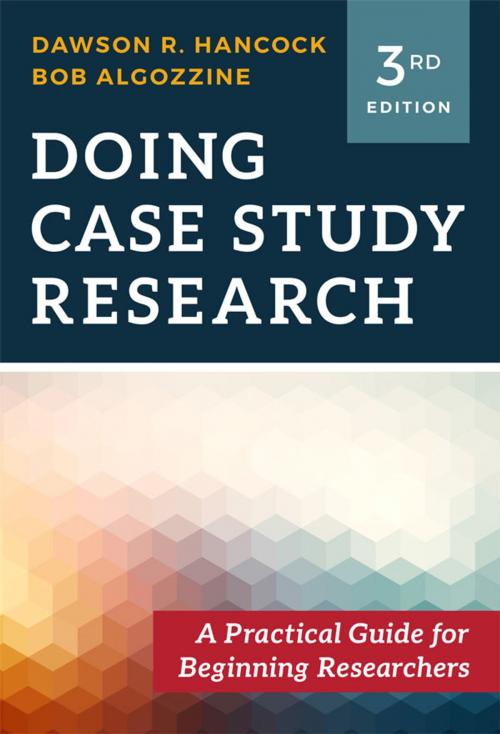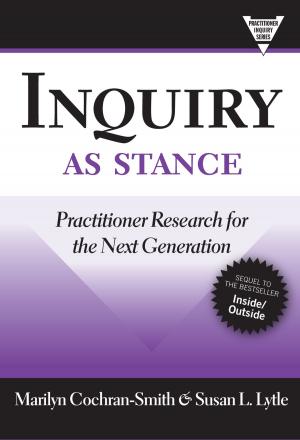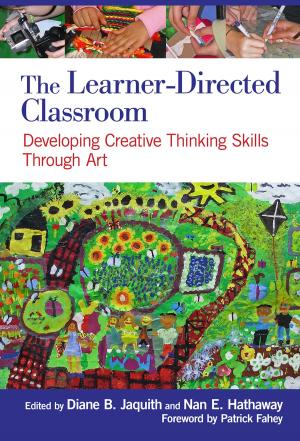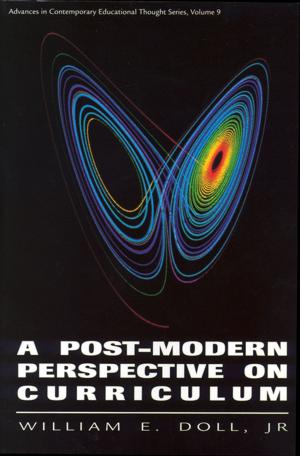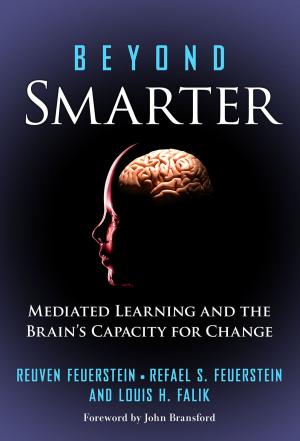Doing Case Study Research
A Practical Guide for Beginning Researchers
Nonfiction, Reference & Language, Education & Teaching, Social & Cultural Studies, Social Science| Author: | Dawson R. Hancock, Bob Algozzine | ISBN: | 9780807775554 |
| Publisher: | Teachers College Press | Publication: | December 15, 2009 |
| Imprint: | Language: | English |
| Author: | Dawson R. Hancock, Bob Algozzine |
| ISBN: | 9780807775554 |
| Publisher: | Teachers College Press |
| Publication: | December 15, 2009 |
| Imprint: | |
| Language: | English |
Reflecting recent knowledge and developments in the field, this very practical, easy-to-use guide emphasizes learning how to do case study research—from the first step of deciding whether a case study is the way to go to the last step of verifying and confirming findings before disseminating them. The authors show students how to: determine an appropriate research design; conduct informative interviews; record observations; document analyses; delineate ways to confirm case study findings; describe methods for deriving meaning from data; and communicate their findings. Featuring many new examples, the Third Edition offers step-by-step guidance to help beginning researchers through the stages of planning and implementing a thesis, dissertation, or independent project. This succinct “how-to” guide is an excellent place for anyone to begin doing case study research.
Book Features:
- Straightforward introduction to the science of doing case study research.
- A step-by-step approach that speaks directly to the novice investigator.
- Many concrete examples to illustrate key concepts.
- Questions, illustrations, and activities to reinforce what has been learned.
“Hancock and Algozzine have developed an important resource for guiding novice researchers to use logical thinking when conducting case study research. The examples and step-by-step approach illustrate the importance of incorporating theory and practice.”
—Claudia Flowers, professor, UNC Charlotte
“Hancock and Algozzine have written the ‘go-to’ book on case study research. They start out with how case studies fit in with the continuum of qualitative and quantitative research, walk the reader through the stages and methods of case study research, and tie it all together with the “how-to” of preparing proposals and disseminating the results. Each chapter of this easy-to-read text ends with a set of content review questions and activities that guide the reader through applying the material.”
—William Owings, professor, Educational Leadership at Old Dominion University, Norfolk, Virginia
“While this comprehensive basic research tool is intended for doing case study research, the book also includes work on research foundations, stages of doing research, and putting it all together, it is most applicable to a range of research designs, other than case studies.”
—Terry Cicchelli, professor emerita, Fordham University
Reflecting recent knowledge and developments in the field, this very practical, easy-to-use guide emphasizes learning how to do case study research—from the first step of deciding whether a case study is the way to go to the last step of verifying and confirming findings before disseminating them. The authors show students how to: determine an appropriate research design; conduct informative interviews; record observations; document analyses; delineate ways to confirm case study findings; describe methods for deriving meaning from data; and communicate their findings. Featuring many new examples, the Third Edition offers step-by-step guidance to help beginning researchers through the stages of planning and implementing a thesis, dissertation, or independent project. This succinct “how-to” guide is an excellent place for anyone to begin doing case study research.
Book Features:
- Straightforward introduction to the science of doing case study research.
- A step-by-step approach that speaks directly to the novice investigator.
- Many concrete examples to illustrate key concepts.
- Questions, illustrations, and activities to reinforce what has been learned.
“Hancock and Algozzine have developed an important resource for guiding novice researchers to use logical thinking when conducting case study research. The examples and step-by-step approach illustrate the importance of incorporating theory and practice.”
—Claudia Flowers, professor, UNC Charlotte
“Hancock and Algozzine have written the ‘go-to’ book on case study research. They start out with how case studies fit in with the continuum of qualitative and quantitative research, walk the reader through the stages and methods of case study research, and tie it all together with the “how-to” of preparing proposals and disseminating the results. Each chapter of this easy-to-read text ends with a set of content review questions and activities that guide the reader through applying the material.”
—William Owings, professor, Educational Leadership at Old Dominion University, Norfolk, Virginia
“While this comprehensive basic research tool is intended for doing case study research, the book also includes work on research foundations, stages of doing research, and putting it all together, it is most applicable to a range of research designs, other than case studies.”
—Terry Cicchelli, professor emerita, Fordham University
